
China Rising 专制中国的崛起与克林顿们的绥靖
By William R. Hawkins
FrontPageMagazine.com | Friday, February 27, 2009
The global economic downturn, triggered by the U.S. financial crisis that sent tremors through European banks and plunged Japan into a deep recession, could not have come at a better time for China. The turmoil will pull the focus of rival governments inward. There will be no desire, and few resources available, to face new confrontations abroad for years to come. Beijing will use the time to continue its “peaceful rise” without fear of interference by other powers whose longer term interests are at risk as China creates a “multipolar” world it can shape to its advantage.
China is, of course, facing problems. Its economy is dependent on exports in a world where trade is shrinking. Beijing is clearly worried about the impact of declining overseas markets. During the last few months, more than 20 million migrant workers have become unemployed. Last year 2,400 factories in and around the vibrant coastal region of Guangzhou closed. Rapid, double-digit economic growth has become the main legitimizing theme of the Communist dictatorship, and there is a real threat of social unrest if the economy slows. At a meeting of the cabinet last month, Prime Minister Wen Jiabao told government leaders to prepare for trouble, “The country’s employment situation is extremely grim,” he said. More than 3,000 public security directors from across the country have been summoned to Beijing to learn how to suppress rallies and strikes before they turn into riots.
Yet, China’s trade surplus in 2008 set a new record, both in the aggregate and with the United States. Its aggressive export strategy, based on currency values set by the regime, massive subsidies, and dumping by state corporations that value jobs and production over profits, has meant that Chinese exporters can beat out foreign rivals to expand their share of whatever markets remain open. A $585 billion stimulus package was introduced in November; much of it aimed at labor-intensive construction projects. And China’s already largely closed market for imports is becoming more protectionist– even as Beijing demands that markets in America and Europe open further to its products.
China also has the world’s largest hard currency reserves, estimated at around $2 trillion, the result of accumulated trade surpluses. The United States alone has given China $1.5 trillion via its trade deficit between 2000 and 2008. This massive Chinese hoard of capital hangs over the debt-ridden world economy like the Sword of Damocles. In the ancient Greek fable, the wealthy and powerful ruler of Syracuse was constantly menaced by a sword that hung over his throne by a single horsehair. Secretary of State Hillary Clinton certainly behaved as if she was sitting under such a weapon when she visited China last weekend.
The United States and China sit on opposite sides of every arena of conflict across the globe, as well as represent contrary principles of government and human rights. Yet, none of these issues played a major role in the discussions between Secretary Clinton and Chinese leaders, and many were not even mentioned. Beijing was praised for its “positive” role in hosting the Six-Party talks on North Korea. These talks have served Chinese interests well, protecting the Pyongyang buffer state from any concerted foreign pressure and even getting sanctions lifted in exchange for very little in the way of verifiable changes in regime behavior. Chinese support for the Iranian regime and its nuclear ambitions, which have stymied sanctions and undermined international pressure, was mentioned only by Chinese Foreign Minister Yang Jiechi in the joint press conference of Feb. 21, not by Secretary Clinton. There does not seem to have been any mention of the genocidal Islamic dictatorship in Sudan, which is armed and funded by Beijing in exchange for control of its oil industry, despite Secretary Clinton’s long standing personal concern for what is happening there.
There was no public sign that Afghanistan was discussed in Beijing. China is strengthening its ties with Pakistan, providing new combat aircraft and warships. It is also giving Islamabad diplomatic support to resist U.S. pressure to take the offensive against Taliban sanctuaries in Pakistan’s border region from which attacks are launched against U.S. and NATO forces in Afghanistan. Chinese arms are also the mainstay of the Taliban insurgents.
At the Feb. 21 joint press conference, Secretary Clinton said “it is essential that the United States and China have a positive, cooperative relationship. Both of us are seeking ways to deepen and broaden that relationship.” A great deal of attention was devoted to environmental issues, as if the U.S. side was trying to create a common enemy in “global warming” so as to form an alliance with China that would overshadow all the traditional geopolitical conflicts that divide the two nations.
Secretary Clinton has taken flak from the human-rights community for downgrading their concerns in China. This should not have been surprising, since her husband Bill Clinton did exactly the same thing. President Clinton changed his campaign rhetoric about using trade as leverage for reform in China once he was in office under pressure from the business community. That corporate pressure is still in full force, but is now reinforced by the need to keep Chinese capital flowing to fund the U.S. budget deficit, even though that money originated from American consumers. Secretary Clinton tried to assure Beijing’s leaders that their considerable investment in Treasury bonds would remain safe.
Yet, in a world where banks and factories are failing, the potential returns from buying distressed real assets to take control of future production could be irresistible. Two days before Clinton arrived in Beijing, Fang Shangpu, deputy director of China’s State Administration of Foreign Exchange, said that China will encourage and assist its companies in expanding operations and acquisitions overseas. Beijing has for many years been buying up energy and other natural resources in Africa, Asia and Latin America, taking them off the market for exclusive use by Chinese industry. A considerable debate has been triggered in Australia by Aluminum Corporation of China’s (Chinalco) decision to invest $19.5 billion in British-Australian Rio Tinto Group and China Minmetals’ offer for a $1.7 billion investment in OZ Minerals Ltd. China Investment Corporation, the $200 billion sovereign wealth fund, is thought to be in talks with Fortescue Metals Group Ltd., Australia’s third-biggest iron ore exporter, about gaining a $3 billion stake.
The China Development Bank (CDB) is in final negotiations with Brazils Petroleo Brasileiro SA (Petrobras) to loan the company some $10 billion for deepwater energy development — a loan to be repaid in oil. Beijing’s approach is a resurrection of the 19th century colonial model. It buys raw materials and invests in infrastructure projects to develop trade routes, paid for by the export of manufactured goods on very favorable terms. Chinese mercantilism is not about profit in the sense used in Western capitalist theory. It is about the control of wealth and production capacity as the foundation of state power and international influence.
Beijing believes its rise to great power status is inevitable, but that it will take time to construct the economic, social and political foundations. During the period of emergence, China could be vulnerable to foreign pressure. It has played a wily came, posing as a fragile developing country that needs special treatment to alleviate poverty and establish a basis for reform; while at the same time using its economic and diplomatic clout to project its growing power and deter counteraction. This strategy has been very much in line with Sun Tzu’s ancient advice that, ““Warfare is the Way (Tao) of deception. Although capable, display incapability. When committed to employing your forces, feign inactivity.”
The “peaceful rise” line of propaganda was introduced over ten years ago in response to the “China threat” theory advanced at the time by Lee Kuan-yew of Singapore, whose strategic city-state built a dockyard designed for use by U.S. aircraft carriers in an attempt to pull American power back to Southeast Asia. In 2005, Beijing released a White Paper that tweaked the term from “rise” to “development” to make it sound less aggressive. A year earlier, Gong Li, vice director of the Institute of International Strategic Studies at the Central Party School of the Chinese Communist Party, had presented a conference paper arguing that only a minority of Chinese officials believe that common interests outweigh contradictions between Beijing and Washington. A majority believe that Washington could take action to “contain” China before it can become a threat to American “hegemony.” Beijing needed to buy time to grow strong in an environment of appeasement and accommodation. It will now have that time.
Japanese Prime Minister Taro Aso, who as Foreign Minister in 2005 told a press conference that China was beginning to pose a "considerable threat" because of its military buildup, is about to visit the White House. But he has an approval rating back home nearing single digits as Japan spirals into recession. President Barack Obama, looking to reduce the budget deficit even as massive stimulus packages are being passed by Congress, is planning major cuts in combat aircraft programs, missile defense and naval shipbuilding– the very capabilities that would be needed to contain a China that is modernizing and expanding its military in these same areas. As twilight is falling on the West, Beijing sees a new day dawning in the East.






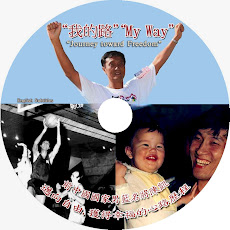







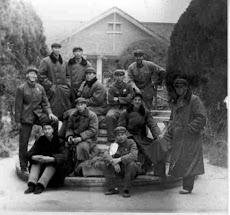


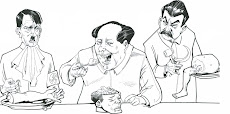
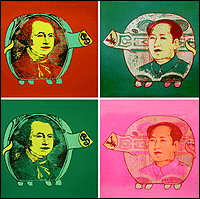
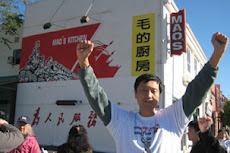













No comments:
Post a Comment